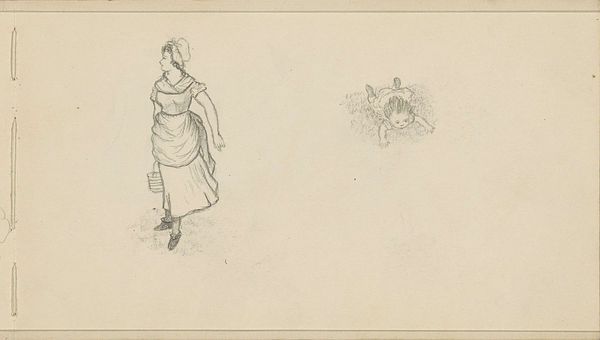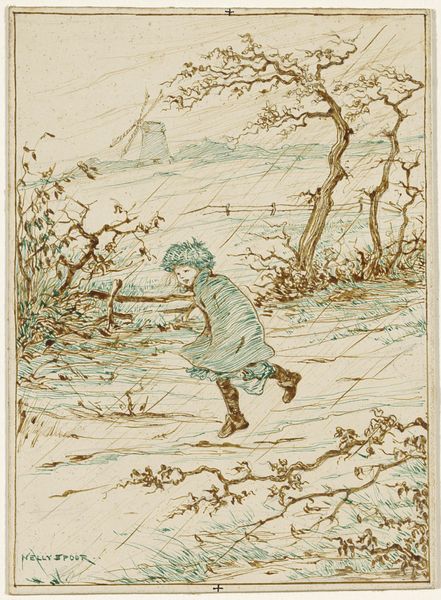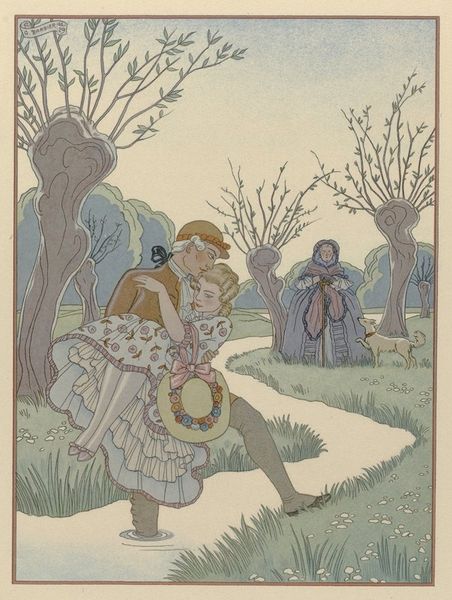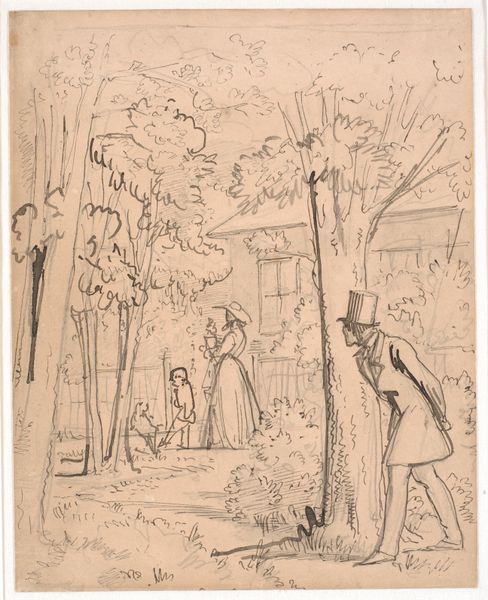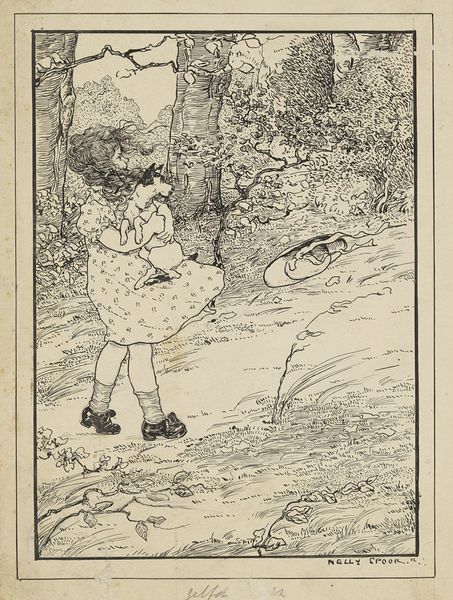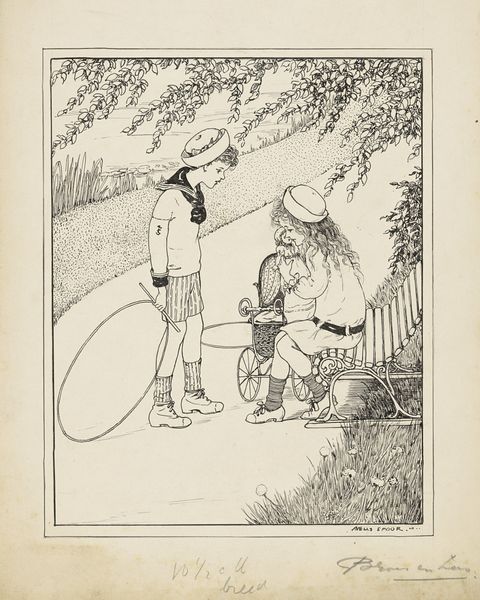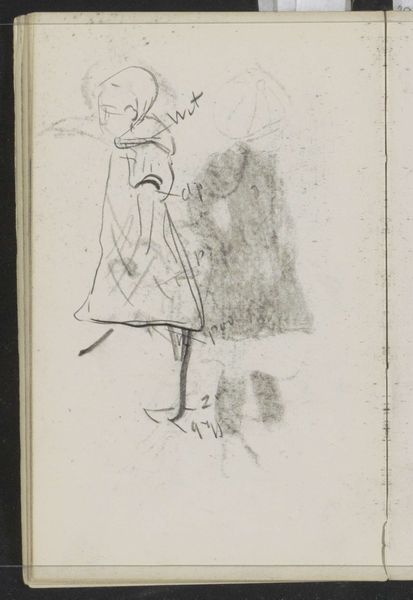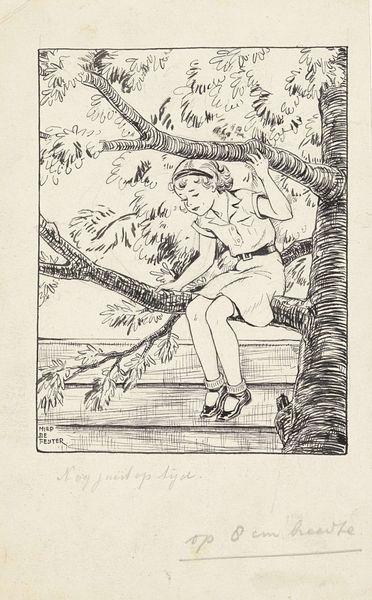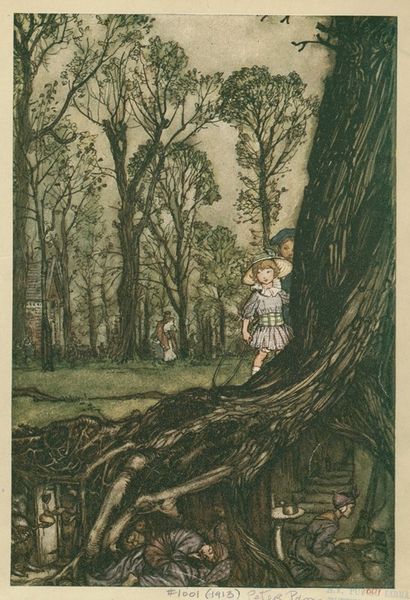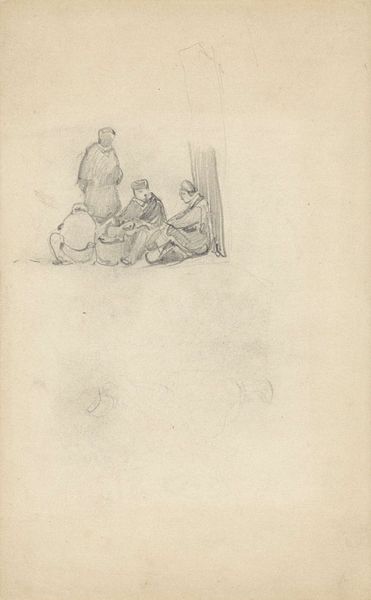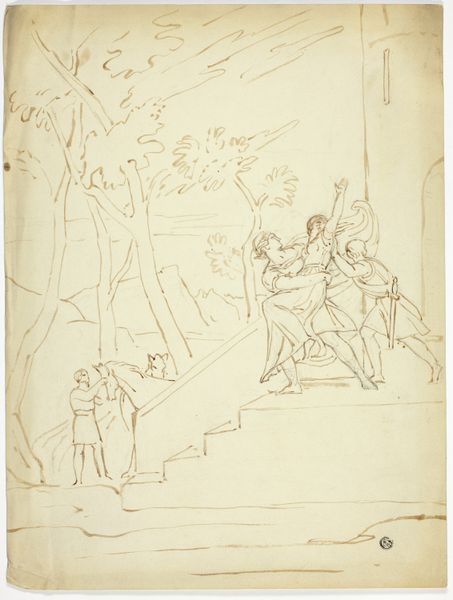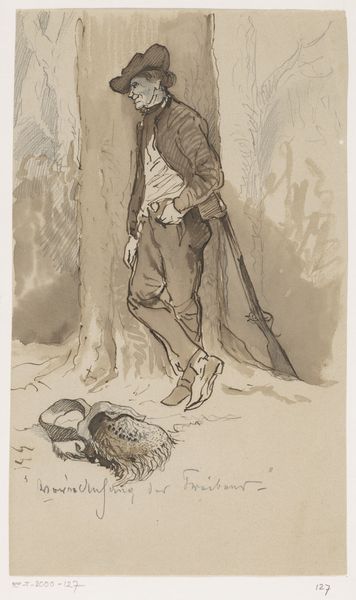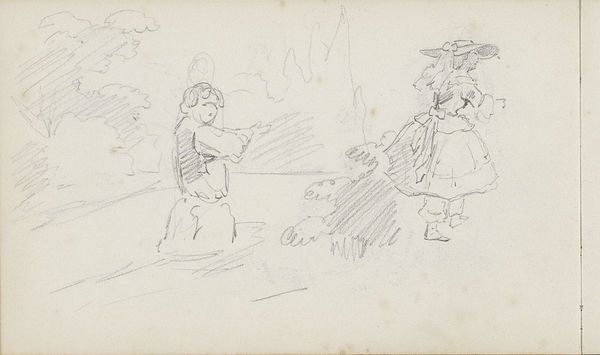
watercolor
#
landscape illustration sketch
#
toned paper
#
narrative-art
#
figuration
#
personal sketchbook
#
watercolor
#
ink drawing experimentation
#
coffee painting
#
sketch
#
botanical drawing
#
sketchbook drawing
#
watercolour illustration
#
genre-painting
#
sketchbook art
#
watercolor
Copyright: Public domain
Curator: Alright, let’s take a look at “The Mice Escape,” a watercolour and ink drawing on toned paper by Beatrix Potter, dating back to 1902. What strikes you first? Editor: Well, there's an unsettling, almost surreal atmosphere hanging in the air. It's like stepping into someone’s dream or a peculiar stage play where the props and players feel both familiar and strangely distorted. Curator: Indeed. Potter really excelled at creating these liminal spaces, didn’t she? Look at how she uses perspective to give the sense of a slightly tilted reality. The eye is drawn to the gentleman, meticulously placing a teacup back on the shelf, utterly oblivious to the flurry of mice that occupy his kitchen. It's a charming genre scene punctuated by hints of impending chaos. Editor: Chaos definitely brewing there! The sheer number of mice scuttling across the floor creates a kind of visual rhythm—a frantic energy underscored by those long, wiry tails that create linear patterns on the tile work. How does this detail fit within a formal reading of the piece? Curator: It speaks to the inherent dynamism within supposedly static environments. Even here, Potter injects life. You almost feel the scratching of tiny claws, don’t you? She’s known for children stories, of course, but what does this work say? I think she’s asking viewers to reflect on the quiet rebellion of the unnoticed—a whimsical yet incisive commentary on the natural order and those little disruptions we often ignore. Editor: Yes, this subversion is potent. She also is hinting at some sort of system where something is obviously amiss. Are the mice simply invading, or reclaiming something? Maybe what they're doing isn't misbehavior after all. She understood, didn't she, how the overlooked aspects of the mundane are what shapes lived realities, no? Curator: Absolutely! This seemingly simple drawing reveals how careful formal analysis reveals these layers of deeper significance—something Potter was masterful at imbuing. The entire piece takes on this additional vibrancy and speaks more than at first glance. Editor: I agree; she was quietly profound and left breadcrumbs for future eyes and minds.
Comments
No comments
Be the first to comment and join the conversation on the ultimate creative platform.
